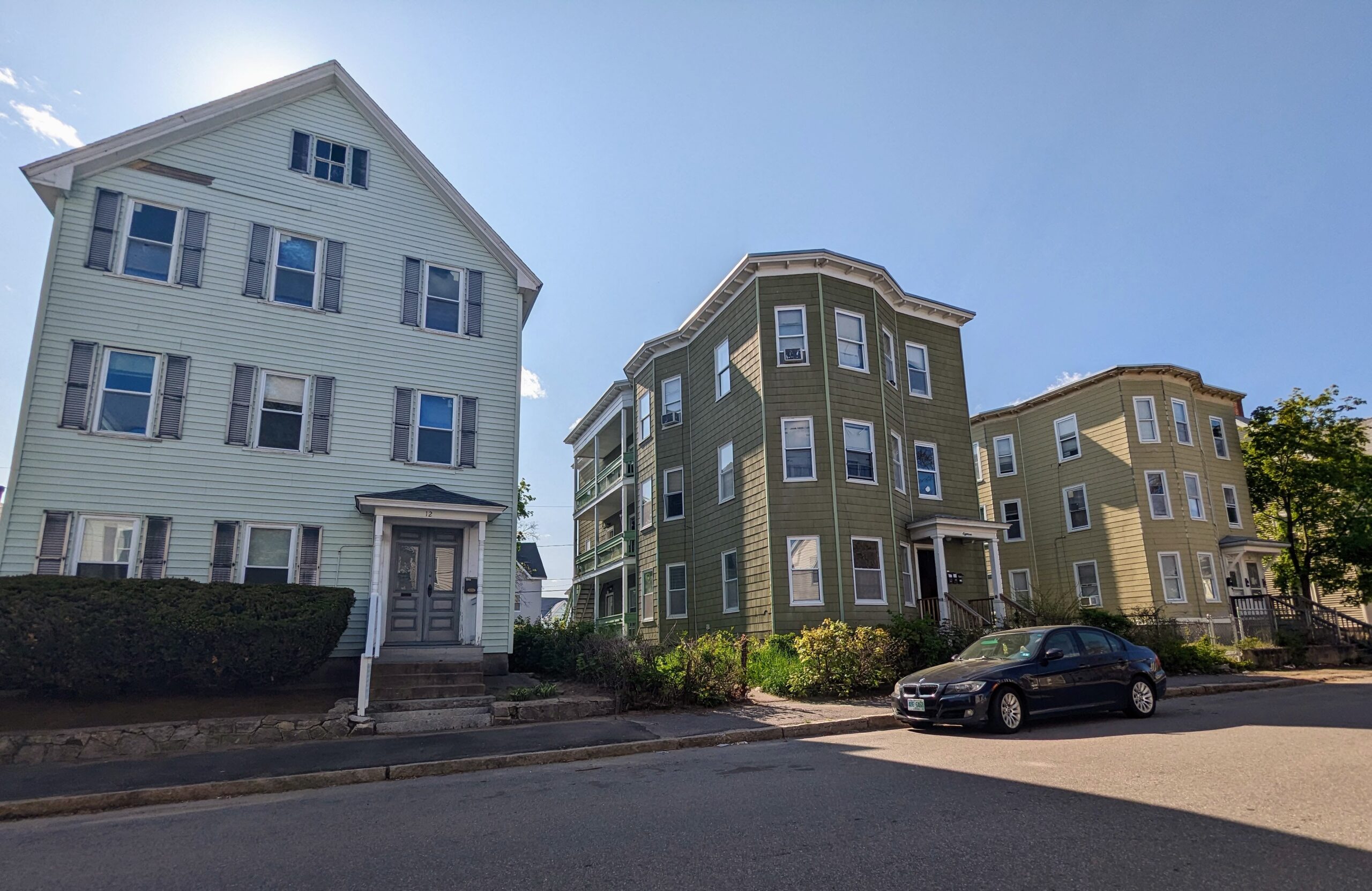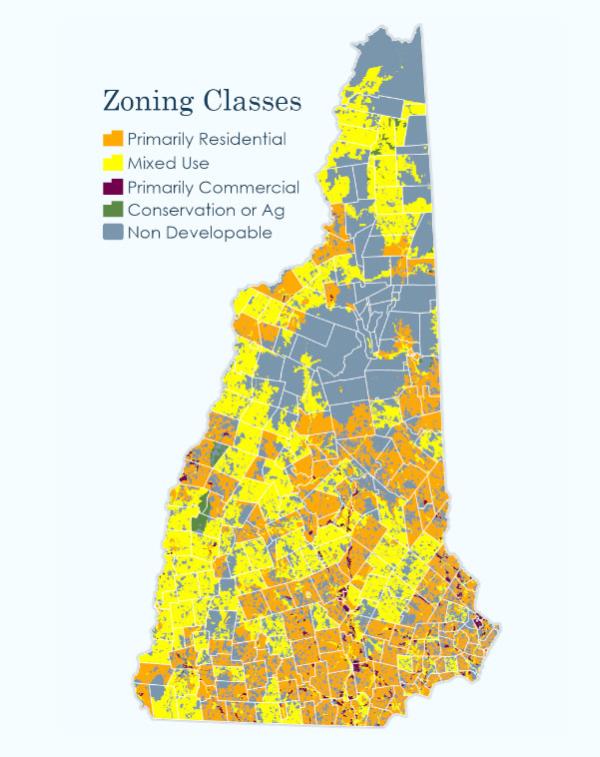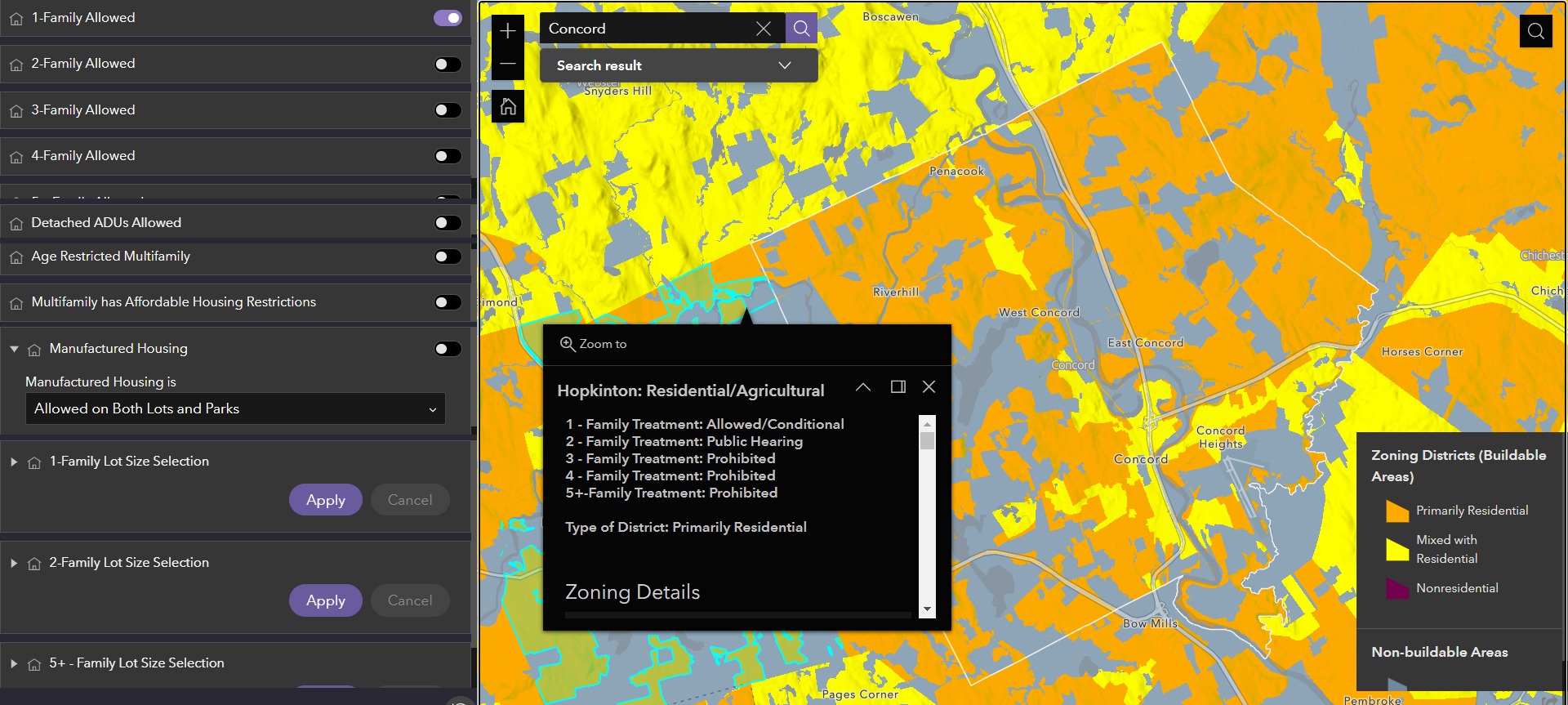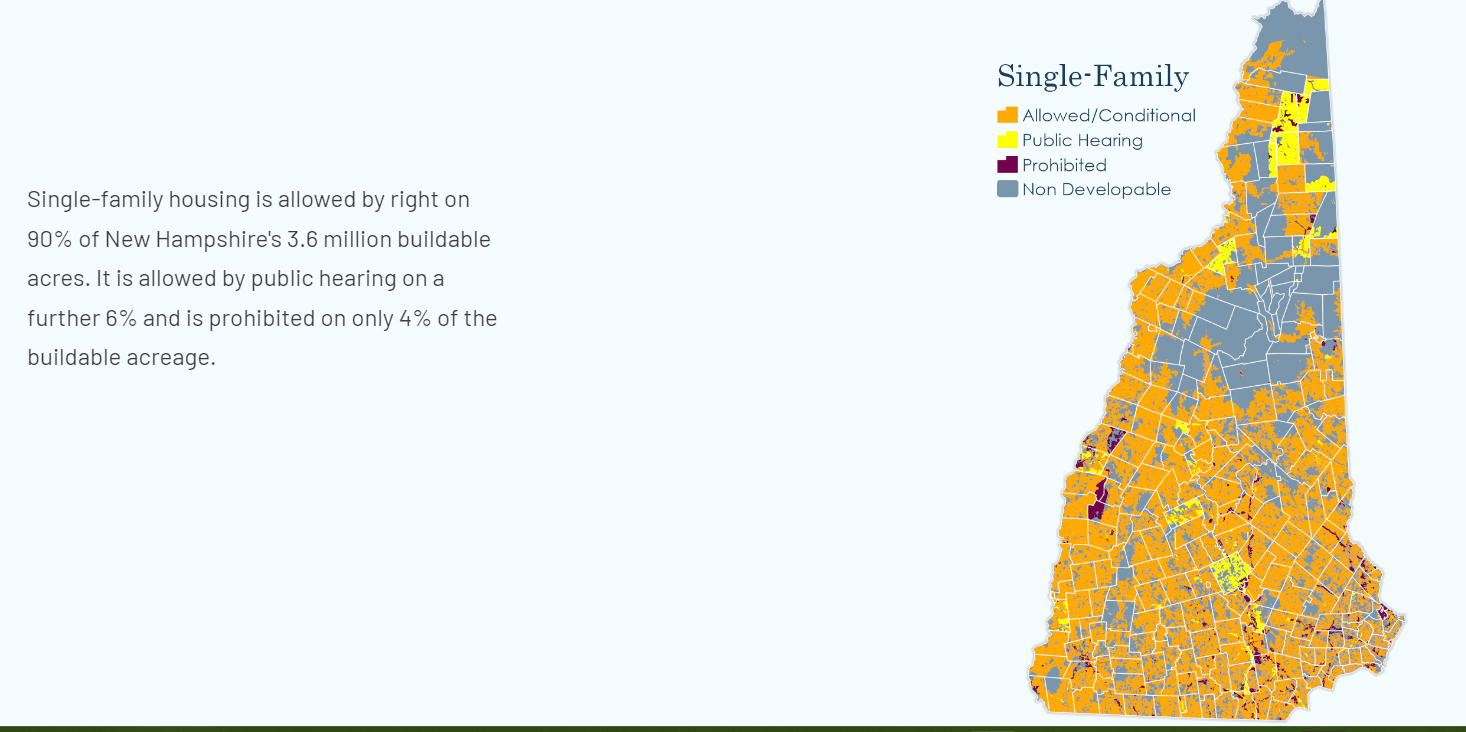

RELATED SIDEBAR ⇒ WHAT IS THE NH ZONING ATLAS?
MANCHESTER, NH – Real estate developer Dick Anagnost had a plan to build 240 residential units on a “perfect” 10 acres. The infrastructure was there, the land was right for development. The problem? Zoning in that community didn’t allow that many units. He could only build 90.
As the state struggles to figure out how to find 23,500 units of housing needed immediately, and 150,000 in the next 17 years, Anagnost’s experience is a textbook example of the huge barrier zoning presents to developing housing. At best, much of the zoning in New Hampshire is difficult to understand and apply. At worst, ordinances are exclusionary and even tyrannical, housing industry experts say.
That could all change with the New Hampshire Zoning Atlas, a free publicly available policy-neutral database that catalogues the state’s zoning and land-use regulations.
The creation of the atlas is a “turning point” in New Hampshire housing history, Rob Dapice, executive director of New Hampshire Housing told those gathered at Saint Anselm Tuesday morning for its launch.

“We’ve done so little to address [zoning] because it’s so freaking complicated,”
The atlas is a step toward uncomplicating zoning and the issues surrounding it, providing both a big-picture look as well a deep dive into restrictions and regulations throughout the state.
Max Latona, director of the Saint Anselm Center for Ethics in Society and director of the atlas project, called it “the hardest thing the center has ever done, but one of the most important.”
Latona said that zoning matters, but conveying the message of the impact restrictive zoning has on housing availability in the state has been “incredibly difficult.”
The atlas is a way to explain it.
Only the third completed zoning atlas in the U.S. as part of the National Zoning Atlas, it is a collaboration by the center, New Hampshire Housing, the New Hampshire Department of Business and Economic Affairs, New Hampshire Association of Realtors, and other stakeholders. Its creators included a group of college student interns, who plowed through more than 23,000 pages of zoning regulations,
The result is an interactive zoning map and database that catalogues 2,129 zoning districts in 269 jurisdictions covering every land area in the state. Users can call up zoning details pertaining to any location, community, or get a statewide or regional overview, of multi-family, ADUs, affordable housing, elderly housing, setback requirements, lot coverage restrictions, parking restrictions, and more.
The atlas is available online for anyone who wants to use it, and the project leaders hope that it will become a tool for those who create local and state policy to better understand the context of regulations. Seeing the data in one place aims to make it easier to connect the dots between policy and how it plays out in the real world.
“Changes that can and should be discussed” include appropriate reductions in minimum lot sizes for single-family and multi-family housing, front setback requirements, and parking requirements, “perhaps especially for ADUs,” the website says.
Some of the over-arching issues are state regulations that are out of context at the local level, decades-old ordinances that no longer fit with reality and stigmas about housing density that block projects.
Some of the results of those issues highlighted by the atlas are:
- Data show that it’s “hard to find land to build small homes or starter homes in an economically viable way.” Only 12.5-18% of the state’s buildable area (depending on soil conditions and infrastructure availability) allows single-family homes on lots smaller than an acre with less than 200 feet of road frontage.
- Manufactured housing at first appears to be allowed in 85% of the state’s buildable area. But taking into account where it would be affordable based on minimum lot sizes and other factors, the area drops to 40%.
- While ADUs (accessory dwelling units) are allowed in many places, they are difficult and expensive for homeowners to add, and regulations like parking requirements may make it impossible in some areas.
- The state requires that five-unit housing be allowed somewhere in town, so there are communities that allow five units, but don’t allow duplexes.

‘Look at what we lose’
The New Hampshire Housing Needs assessment released last month, said the state is in immediate need of at least 23,500 housing units, and must build another 150,000 by 2040.
Those in the housing industry say that can’t happen if there aren’t radical changes to zoning rules at the local level, including removing the stigma around density.
There has been a push this year in the Legislature, as well as locally, including by the New Hampshire Association of Realtors, to actively address issues that would loosen up local regulations, but it’s difficult to do in a piecemeal way, a panel of industry experts said at Tuesday’s events.
Anagnost said that development regulations lack a planning focus and are often knee-jerk reactions to specific proposals or issues.
“We don’t maximize the resources at our disposal,” he said.
The state’s residents are at polar opposite positions when it comes to housing, said Sylvia von Aulock, executive director of Southern NH Planning Commission. Some people love their community the way it is and don’t want anything to change, others love their community but despair that they can afford to stay in it, or that their adult children can afford to live there, or even in New Hampshire.
“Look at what we lose,” she said.
While some people want to “build a wall,” she said, there are others who see the help-wanted signs and know things have to change.
An example, she said, is that municipalities should consider looking at non-residential zones for residential development, and build housing where the businesses are.
Changes must come from both the private and public sectors, but they won’t happen without government buy-in, said Margaret Byrnes, executive director of the New Hampshire Municipal Association.
Government plays a huge part, she said. “The private sector cannot solve it alone.”
Developers must make a profit and local regulations and those who set policy must weigh that against the community’s needs. “There’s supposed to be a balancing act there,” she said.
The state’s residents play a part, too, the panel members said. Voters should be aware of who they put in office and what policies are being created – or should be changed – that have an impact on housing.
She said local officials also struggle with getting real representation of the community to come out and make their feelings known about issues.
The atlas doesn’t take a position on how much local control there should be. “We simply encourage policy-makers at the local and state levels to discuss possible changes in zoning, both small and large, that can help ease the housing shortage and strengthen our communities,” the website says. “How those changes take place is for others to decide.”
The next steps are up to those who use the atlas, its creators said.
Lack of understanding and action has led to “great mistakes” when it comes to developing housing in New Hampshire, Dapice said. “This is a tool, let’s see what it can do. Get out there and use it.”







